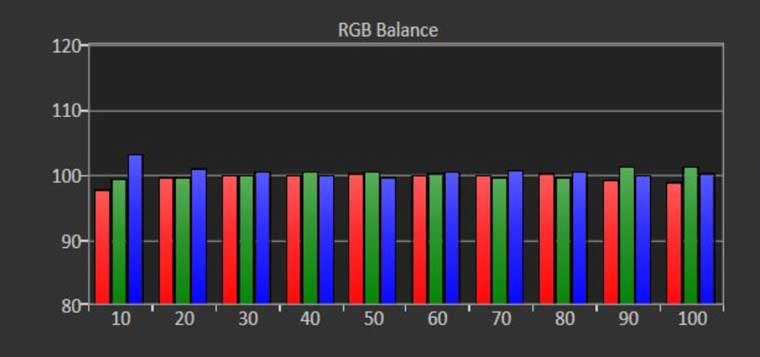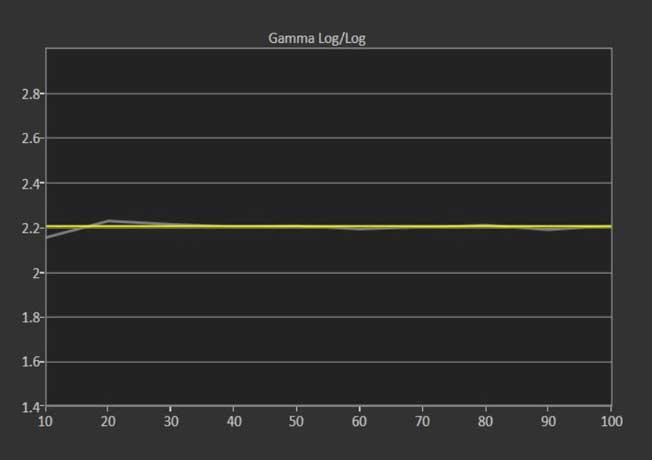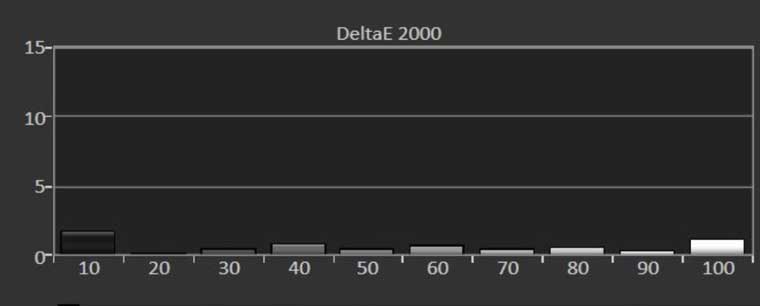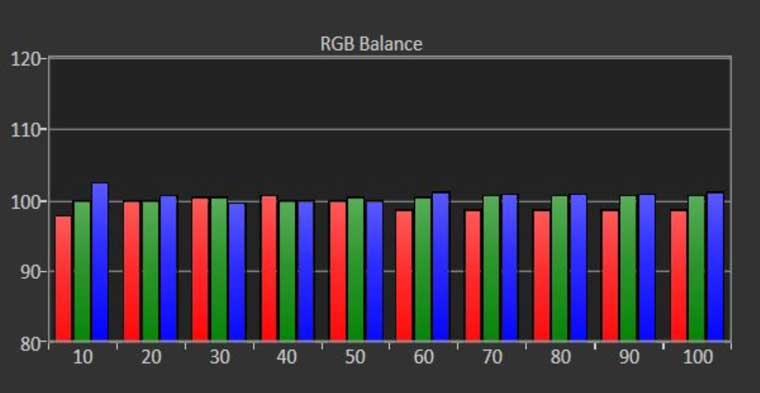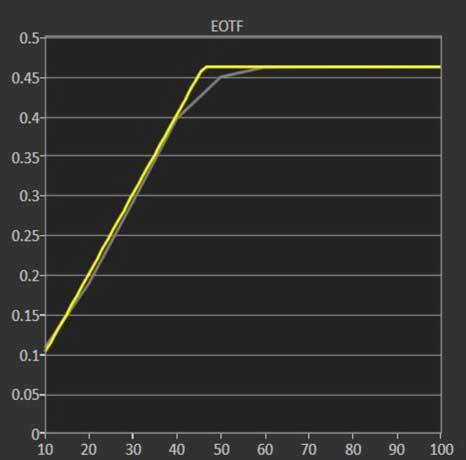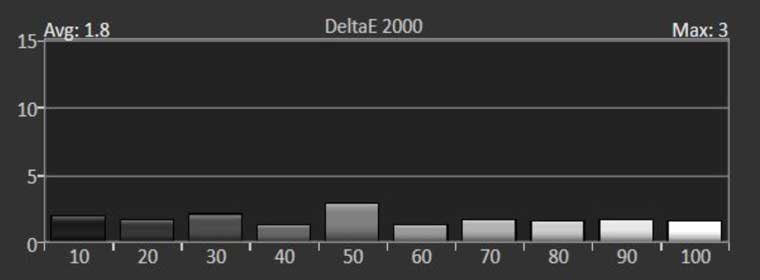For my Best SDR Mode calibration, I chose Natural Mode and increased the Contrast from 50 to 55 which clips whites just above 235. Prior to calibration, the DeltaE measurements were between 6 to 10.
I left Sharpness along with Color and Tint at their defaults. The color temp pre-set was Medium which measured an 8500K average (plus blue / minus red). Setting the Color Temp to 6000K resulted in a white balance just under 6500K so I made some small adjustments to the Red Gain and Blue Gain to raise it back to a 6500K average.
Speaking of white balance, the Home Cinema 3200 offers only 2-point white balance adjustment. There was a multi-point grayscale adjustment menu which I utilized as well. In the end, I was able to achieve a DeltaE of less than 2. However, having more points of adjustment would have allowed me to fine tune the white balance even further. Post-calibration white balance was very good with a 6500K average.
The HC3000 Gamma settings are described using Gamma numbers. The settings are listed as -2 to 2. In Natural Mode the default Gamma setting is 0 which measured as Gamma 2.0. None of the factory Gamma presets allowed me to hit my target of 2.2. The -2 setting was too dark, while the -1 setting was too bright.
The HC3200 does offer a custom Gamma curve setting. Using the nine adjustment points, I was able to achieve a linear 2.2.
Final post-calibration looked and measured very well. After calibration, the projector’s brightness output was 1942 lumens which produced 36.1 ftL on my 120” screen.
After calibration, to increase perceived resolution, I set Image Enhancement (pixel shifting) to ON and selected Preset 2. Since pixel shifting was set to ON, frame interpolation was automatically switched to OFF. During calibration I set Auto Iris (Dynamic Contrast) to OFF but I turned it back ON after to improve dark scene black levels.
Delta E is a metric for understanding how the human eye perceives color difference. The term delta comes from mathematics, meaning change in a variable or function. The suffix E references the German word Empfindung, which broadly means sensation. Simply put, look at Delta E as a measure of grayscale/color accuracy. 3 and under is considered ‘Excellent’ and imperceptible by the human eye.

